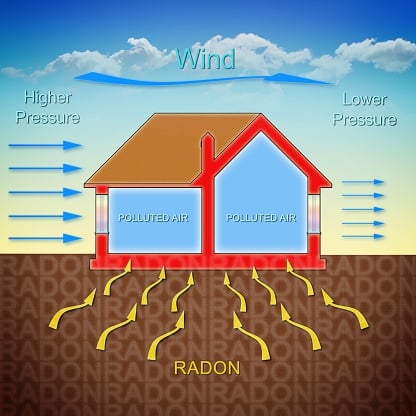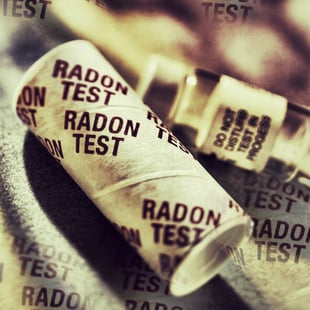Which Homes are More Susceptible to Radon?
You may have heard of Radon Gas and the health issues it can cause, or you may be hearing about is just now for the very first time.
In either case, it doesn't hurt to review.
Radon Gas is the second leading cause of lung cancer in the United State. It is a radioactive gas that cannot be seen, smelled, or tasted, meaning it is completely undetectable to the naked eye.
Not sure about what radon can do to your body? Read our blog post: "A Simple Guide to Radon Poisoning and Its Health Effects."
If you're wondering which homes are more susceptible to radon gas exposure, it's first important to understand where radon comes from.
Table of Contents
- Where does Radon come from?
- Radon Decay
- Which Homes are more Susceptible to Radon?
- Test for Radon No Matter What Home you Own
- Schedule a Discounted Radon Test

Where does Radon Come From?
Radon is a naturally occurring gas that comes from uranium in the earth. Radon is continually released by uranium bearing rocks and soil during the natural decay process that uranium goes through.
There are trace amount of uranium in the soil all around the world. Some areas have higher concentration levels than others, which means some areas have a greater chance at having a radon problem.
Radon can move through the soil freely because it is a chemically non-reactive gas, which means it does not combine with other materials.
When radon reaches the outdoor air, it can quickly become diluted, however, it can also accumulate under slabs and foundations of homes and buildings. Once the accumulation is there, it can easily seep through cracks and openings in a person's home or property, causing an unwanted build up.
Unfortunately, radon decays into other radioactive elements often referred to as radon progeny. When radon progeny is inhaled, it can lodge in the lungs and deliver doses of radiation that can cause damage and cancer to the sensitive lung tissue.
The soil and rock that a home is build upon is often the source of indoor radon. Radon has no problem traveling through air pockets in the soil and into your home.
Which Home are More Susceptible to Radon?
Now that you have an understanding of radon gas and where it comes from, it shouldn't be too hard to figure out that any home or building is susceptible to radon gas.
Radon is not attracted to a specific type of home such as a ranch style home, Victorian home, or slab home. Since radon comes from the ground, whether or not your home has high concentration levels of radon is going to strictly depend upon the type of soil and rock that the home was built on.
In other words, whether your home is old, new, insulated or not, large, small, one story or two stories is not going to make a lick of difference when it comes to the amount of radon gas that can be found inside the home.
All homes, regardless of how they were constructed, should be tested for radon to make sure the home is safe from this dangerous gas.
Test for Radon, No Matter what Type of Home you Own
If your home has never been tested for radon gas, now is the time.
If you were hoping that your home doesn't need tested because of the way it was built, you are sorely mistaken. Since you cannot see, smell, or taste radon, you will need to hire a licensed professional to complete a radon test inside your home.
The technician will bring testing equipment that is up-to-date with The Ohio Department of Health. They will set the machine in the lowest level of your home for a minimum of 48 hours. Once they return to collect the equipment, you will be given a detailed description of the test results.

When a technician uses a Radon Continuous Monitoring Device, the test will show the radon levels for every hour that is was inside the home. You will be able to see when the radon was at its highest, when it was at its lowest, and the average amount that sits in your home.
If the test results come back with an average number of 4.0 pCi/L, The Environmental Protection Agency recommends you take action and install a removal system.
Radon Mitigation Systems were designed to reduce high concentration levels of radon. Once a licensed specialist has seen your home, they will be able to explain the removal process and show you the best location in your home to install the system in order to reach optimal results.
If you have never had your home tested for Radon Gas, click the link below to schedule a discounted test with the experts from Radon Eliminator today.





